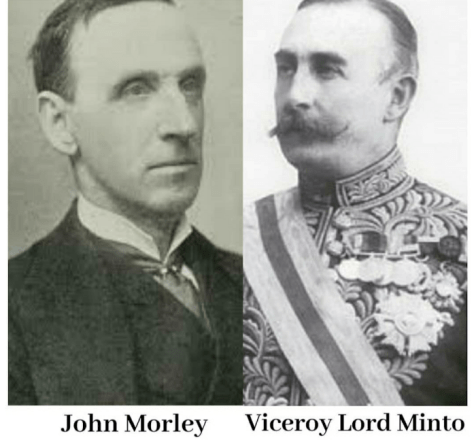In 1909, the British parliament passed an act named as Indian Council Act (1909) for increasing the number of Indians in the governance in British India. This came after the constant demand of the Indian National Congress of Home rule. This Indian Council Act 1909 was famously known as the Morley-Minto Reforms.

The Indian Council Act 1909 was a response & reaction to the political environment prevailing in India. By this time, the level of nationalist awakening had reached a great height. The extent was dominating the nationalist activities. Then the younger generation of Indian nationalists had lost faith in the British sense of justice & fairness. They knew that British Rule was essentially colonial. The demand for Swaraj had replaced the goal of the Indian Council Act.
Provision of Indian Council Act 1909
The strength of the legislative council was extended. The number of additional members in the legislative council was fixed at a minimum of 16 & a maximum of 60. The system of indirect election introduction in 1892 was continued. Members of the legislative council were elected by members of the district board & municipality. The members of the legislative council were allowed to ask a question & supplementary question. The power discuss budget was also given. Members were also given the power to request additional grants for local self-governing bodies. Separate electorates were granted to landlords and Muslims.
The reaction of the Indian National Congress to the Indian Council Act 1909
The provision of this Indian Council Act 1909, was no close to Indian aspiration even moderate failed to dishearten. They lost faith in moderate politics and started pursuing extremist politics. The Indian nationalist was demanding Swaraj but there was no trace of Swaraj in the provision of this act. The real power was still in the hand of the Governor-General & Governor because they were enjoying veto power. Indian nationalists demanding adult suffrage but this act continued the voting rights only for males based on property qualification women were not given.
Indian nationalist demanding control over budget but members of legislature was not even allowed to vote. The strongest criticism of congress was aimed at separate electorates. It was clearly an attempt to divide Indians along religious lines.
Significance of Separate Electorates
In this Indian Council Act 1909, the grant of a separate electorate to Muslims created a cardinal problem for the Indian political system because as & when the task of reviving/reforming the Indian electorate system more & more community used to demand the same privileges for themselves. This demand continues with expanding of the passage of time. In Montagu-Chelmsford Reforms 1919, a separate electorate granted for Sikhs, Indians, and Christians & Anglo Indians.
In 1932, separate electorates extended to depressed classes. In 1935, separate electorates extended to women and the working class. The grant of the separate electorates to Muslims paved the way for the growth of separate outlooks among members of the Muslim community. In words of Jawaharlal Nehru, the grants for a separate electorate for Muslims institutionalized the division of Muslims from other Indians because the interest of Muslims considered different from other Indian communities.
Separatist forces were greatly strengthened by the grant of a separate electorate because this provision allowed spreading their influence among the Muslim masses. Grant for Muslims greatly strengthened communal masses. Congress opposed the grant of a separate electorate to Muslims, it was interpreted as Hindu rule to Muslim progress. This helped in spreading the popularity of the Muslim league among common Muslims.
Hindu orthodox electorate also strongly condemned separate electorates for Muslims. The intensification of Congress & strengthening of separate force resulted in a large number of communal riots in various parts of Indian & ultimately it resulted in the partition of the nation in 1947.

